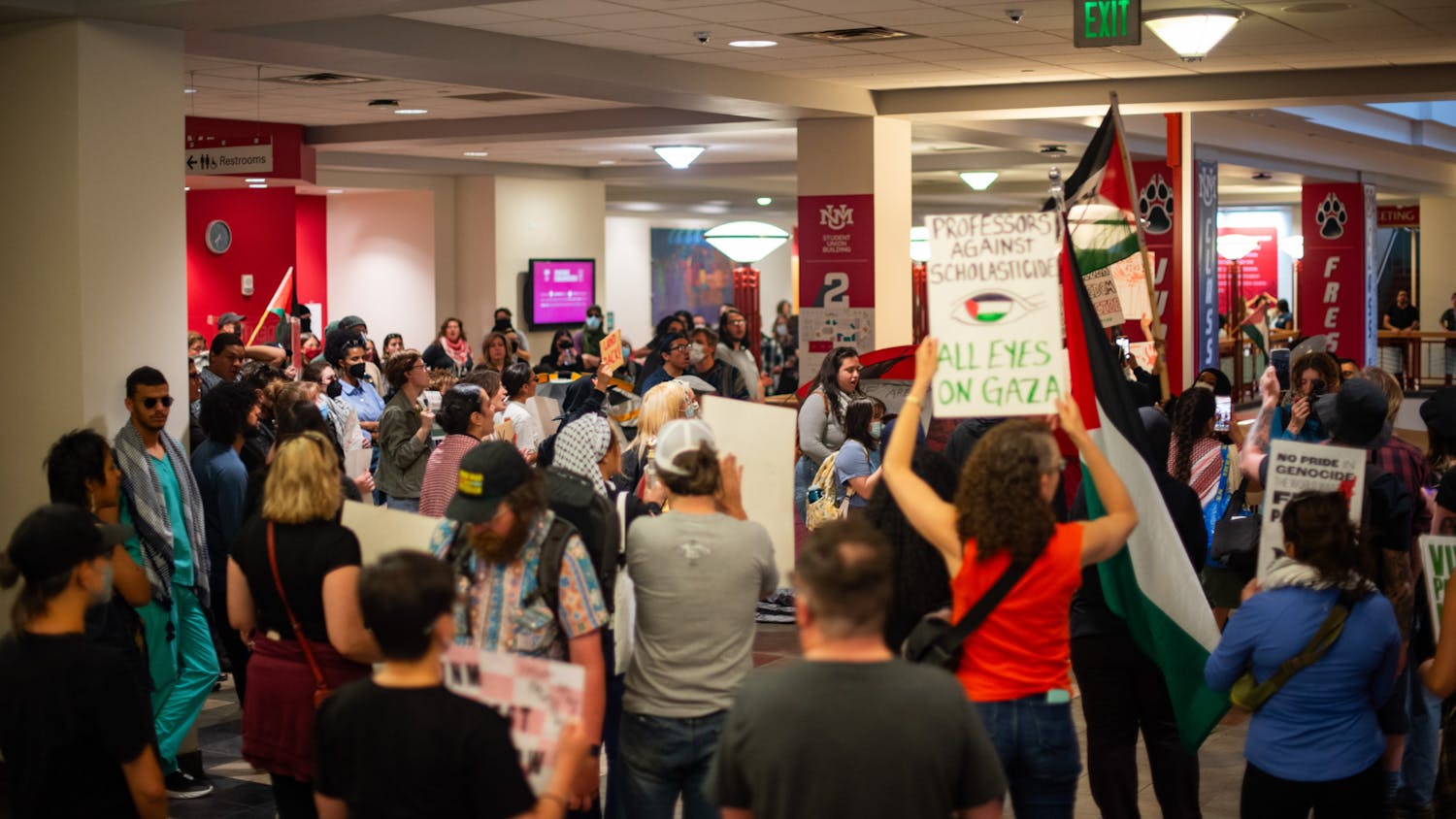cultureassistant@dailylobo.com
@fmfeather
It’s 9 a.m. and sleepy students shuffle around a distracted student near the Duck Pond. Freshman Michael Laflin keeps an eye on the two figures on the hill; Michael Mirabal and Chris Duran stand next to a supply box, glancing around and adjusting their arm bands while they talk.
As they turn away, Laflin makes his move. He sprints silently up the hill — when the two look back, all they see is Laflin saunters forward with a smile and a bandana. After a short conversation, Mirabal and Duran turn to leave.
With an easy reach of his hands, Laflin infects them both. The game has begun.
Humans vs. Zombies (HvZ) is a tag-like game, played internationally by colleges, K-12 schools, military bases, camps and more. After weeks of recruiting and rallying, one or more original zombies (OZs) are chosen, who set out to eat brains.
Each OZ is disguised for the first 24 hours or until they infect six humans. After that, zombies are identified by the bandana on their head. UNM’s HvZ started with three OZs this year, one of whom was Laflin.
UNM students have hosted HvZ several times and are kicking off this year with 122 humans. The game began Monday and ends Friday at 4 p.m. It is open to new players until Wednesday.
Players are distinguished by a brightly colored bandana worn during the game. Humans tie their bandana around their upper arm and infected players place the bandana around their neck.
Safe zones and other common sense rules are in place.
Mirabal, a junior and one of the game’s three moderators, was one of the first few infected, though he has played the game every semester for three years.
“It is probably the most intense game on campus,” he said. “The people who play are awesome and every year is a new challenge trying to survive the zombie apocalypse.” On Friday, surviving humans will celebrate — if they have made it to the evacuation zone. Otherwise, zombies will shamble around happily.
According to HvZ rules, to be infected, humans must be tagged by a zombie. Humans can fight back by throwing balled-up socks, after which the zombie is stunned for 15 minutes. If they fail and are infected, humans place their bandana around their neck for one hour and then rejoin.
Get content from The Daily Lobo delivered to your inbox
Once humans are tagged, they surrender a special ID code that the zombie enters on the game’s website for points. The website actively tracks how many zombies and humans there are.
There is still time for students who want to participate to join in the hunt.
Go to the website to register and obtain your ID code.
hvzsource.com/unm





